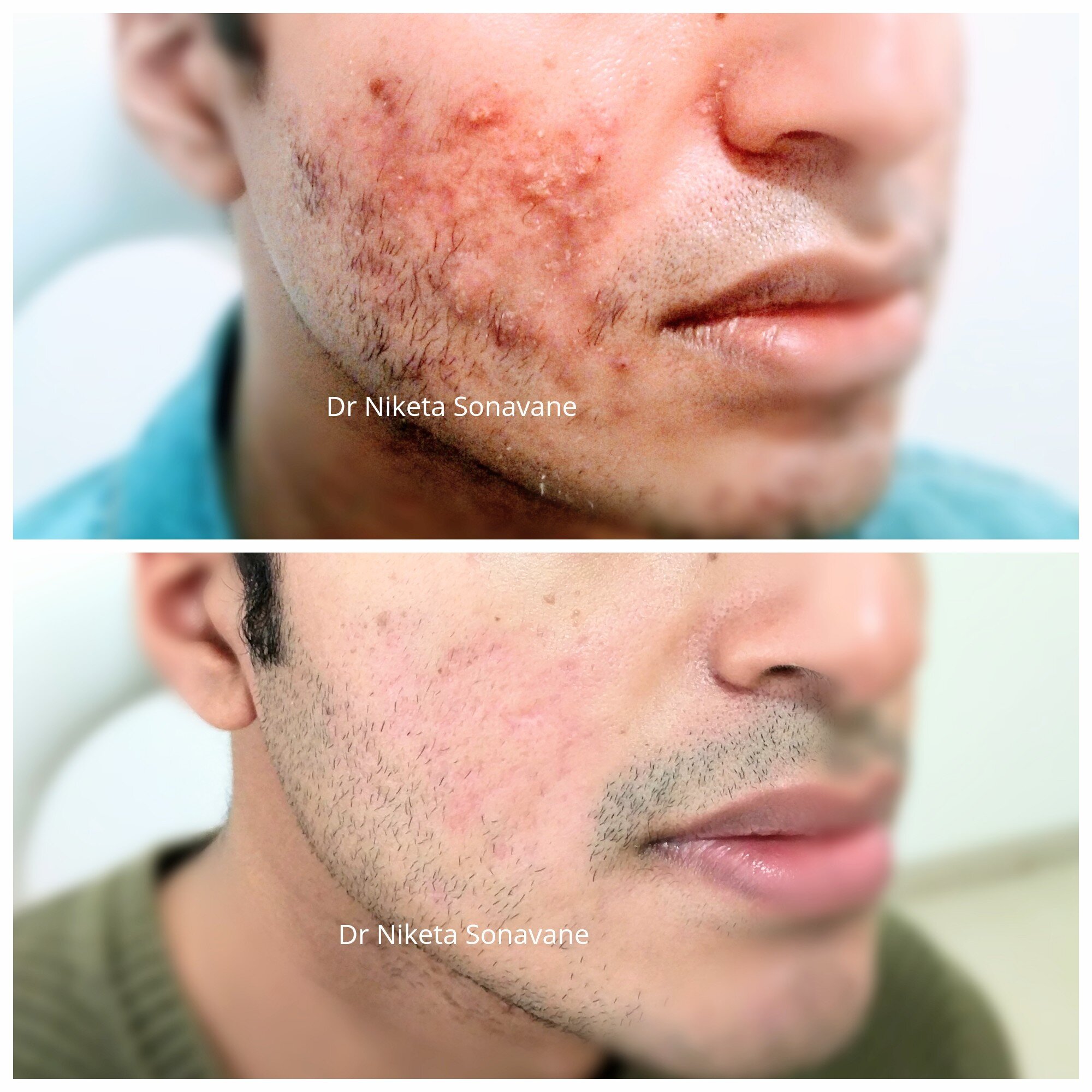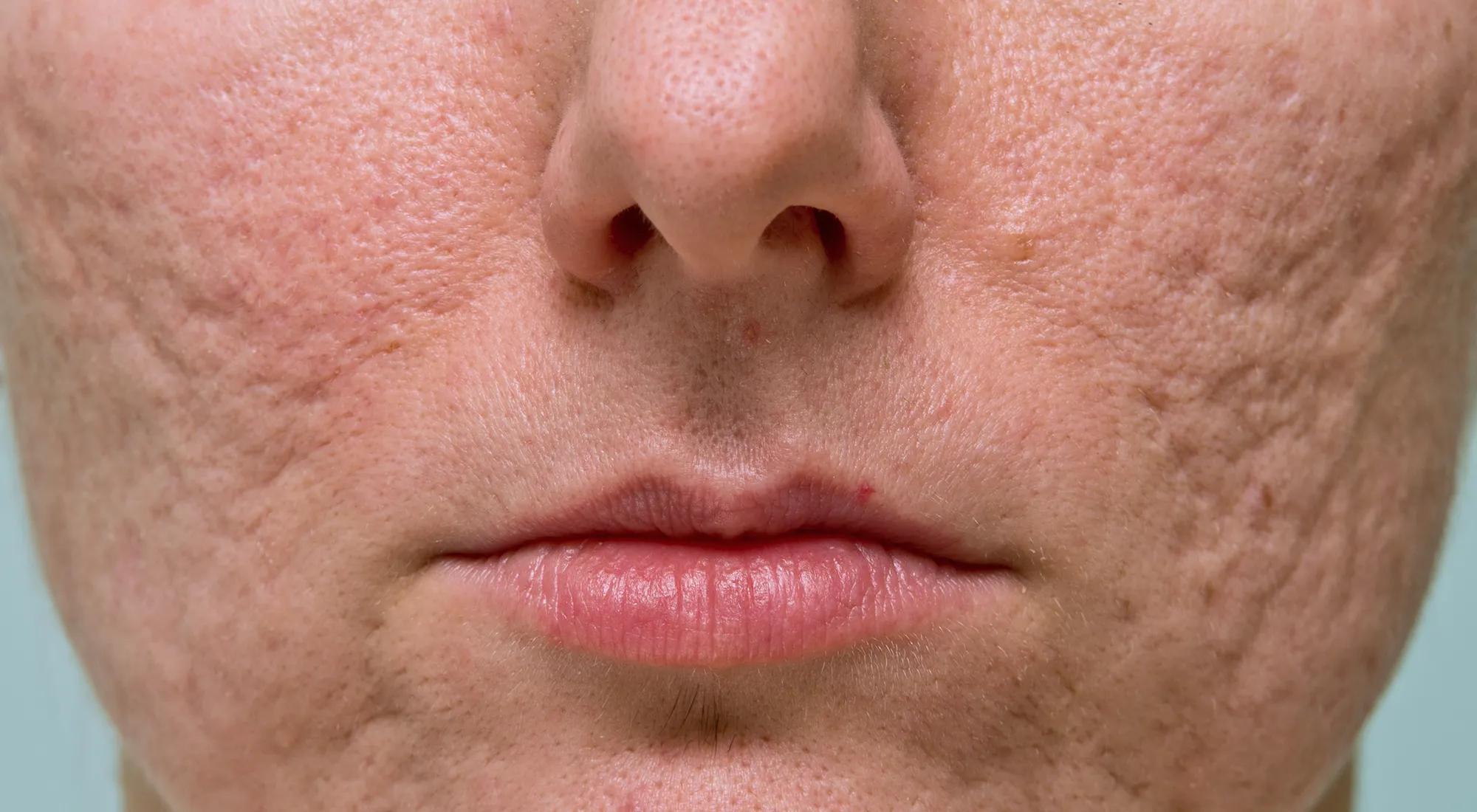Best Acne Scars Treatment: Advanced Techniques for Easier Skin
Understanding the Numerous Skin Conditions and Effective Therapy Choices for Acne Scars
Acne scars stand for a complicated interplay of skin conditions that dramatically impact individuals' self-confidence and overall skin health. Recognizing the distinctive sorts of acne marks-- atrophic and hypertrophic-- alongside their underlying causes, is critical for establishing effective treatment approaches. Different therapeutic choices exist, ranging from innovative dermatological treatments to natural remedies. Nevertheless, the efficacy of these therapies often hinges on tailored analyses by qualified experts. As we discover the landscape of acne scar monitoring, it ends up being apparent that the journey towards clearer skin may include more than simply topical services.
Sorts Of Acne Scars

On the other hand, hypertrophic marks arise from an overflow of collagen during the recovery procedure, resulting in elevated locations on the skin. These scars are frequently firm and can vary in shade, occasionally showing up red or darker than the surrounding skin.
Comprehending these kinds of acne scars is essential for establishing an effective treatment plan - skin rejuvenation treatments. Options may consist of chemical peels, laser treatment, microneedling, or dermal fillers, customized to the specific scar kind. A detailed appointment with a skin doctor can aid determine the most proper treatment, taking into consideration the person's skin type, mark severity, and general skin wellness
Reasons For Acne Scarring
Marking occurs as a result of the body's all-natural recovery action to swelling and injury triggered by acne lesions. When acne forms, it activates an inflammatory feedback, bring about the launch of various cytokines and growth elements that promote recovery. However, this process can occasionally bring about too much cells formation or poor repair service, causing marks.
The primary sources of acne scarring include the seriousness of the acne itself, period of the sores, and private skin types. Severe inflammatory acne, such as nodules and cysts, is more likely to cause scarring as a result of much deeper tissue damage. In addition, inappropriate handling of acne sores, such as squeezing or choosing, can intensify tissue injury and inflammation, boosting the chance of scarring.
Genetic proneness likewise plays a considerable role; individuals with a family members background of scarring are at a higher danger. Skin type and shade can affect mark development, as darker skin tones may experience post-inflammatory hyperpigmentation, while lighter skin might develop atrophic scars.
Ultimately, recognizing these reasons is necessary in handling acne and mitigating the possibility for scarring.

Therapy Alternatives for Scarring
Effective therapy alternatives for acne scarring vary depending on the type and extent of the marks. Normally categorized into atrophic, hypertrophic, and keloid scars, these conditions require tailored approaches for ideal outcomes.
For atrophic marks, which are characterized by a loss of tissue, therapies such as chemical peels, microdermabrasion, and laser therapy are frequently used. These approaches promote skin renewal and stimulate collagen manufacturing, consequently boosting skin appearance. Subcision, a minimally invasive treatment, can likewise work by damaging up fibrous bands under the skin.
Keloid and hypertrophic scars can be a lot more challenging to deal with. Options consist of corticosteroid injections to minimize inflammation and squash the scars. In many cases, cryotherapy or laser therapy may be advised to reduce their appearance.
Surgical alternatives are readily available for severe scarring, where excision or skin grafting may be necessary. It's important for people to her comment is here speak with a skin doctor to examine their particular mark type and go over one of the most appropriate therapy plan. Incorporating numerous treatments usually produces the very best results, guaranteeing that each client's unique skin problem is dealt with properly.
Natural Home Remedy and All-natural Solutions
Natural options and natural remedy can give an easily accessible approach for people looking for to improve the look of acne scars (acne scars). Numerous ingredients discovered in the home cooking area have shown potential advantages in enhancing skin appearance and promoting recovery

Another reliable choice is lemon juice, which functions as a natural exfoliant and can lighten hyperpigmentation. However, it should be used meticulously, as it might cause photosensitivity. Oatmeal masks are likewise useful; their gentle peeling can help get rid of dead skin cells while calming inflammation.
Crucial oils, such as tea tree oil and lavender oil, can better sustain mark healing because of their antimicrobial homes. It is vital to carry out a spot examination before using any kind of solution to make sure there are no damaging responses. These natural options can be a complementary technique in the journey to reduce acne marks.
Stopping Future Scarring
Embracing a proactive technique to skin care can considerably lower the risk of establishing future acne marks. One of the key methods is to handle acne effectively as it emerges. This entails utilizing non-comedogenic skin care items and medications suggested by skin specialists that target acne without irritating the skin. Regular cleaning, peeling, and hydration can assist maintain skin wellness and avoid blocked pores.
Additionally, avoiding the lure to press or pick acne sores is vital, as this can bring about swelling and subsequent scarring. Rather, people must concentrate on applying topical treatments that advertise healing and lower swelling. Active ingredients such as salicylic acid, benzoyl peroxide, and retinoids are recognized for their efficiency in taking care of acne and decreasing marks.
Sun security is an additional crucial element; exposure to UV rays can hinder and darken scars healing. Making use of a broad-spectrum sun block daily can mitigate these results.
Finally, keeping a healthy diet abundant in anti-oxidants and remaining hydrated assistances skin regrowth. By implementing these safety nets, individuals can significantly this link lower their danger of future scarring and advertise general skin wellness.
Verdict
Finally, a thorough understanding of acne marks, encompassing both atrophic and hypertrophic kinds, is important for effective treatment methods. Tailored interventions, including specialist therapies and natural remedy, can dramatically boost skin look and appearance. Safety nets additionally play a vital function in decreasing future scarring. Consultation with a dermatologist stays critical to devise customized techniques that take into consideration individual skin types and mark extent, ultimately enhancing the effectiveness of mark monitoring strategies.
Acne marks represent a complex interplay of skin conditions that substantially impact individuals' self-confidence and total skin health. The two primary categories of acne scars are hypertrophic and atrophic scars. These marks are further categorized into three subtypes: ice pick marks, which are slim and deep; boxcar scars, which are larger and have distinct sides; and rolling scars, which develop a wave-like appearance due to unequal skin texture.
An extensive examination with a skin specialist can assist determine the most ideal treatment, taking into account the individual's skin kind, scar intensity, and overall skin wellness.
Examination with a dermatologist continues to be imperative to develop tailored methods that think about specific skin types and scar intensity, eventually boosting the efficacy of mark administration strategies.